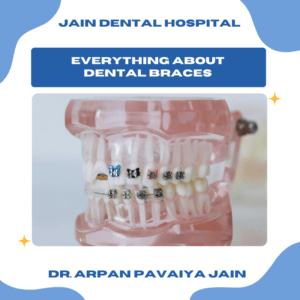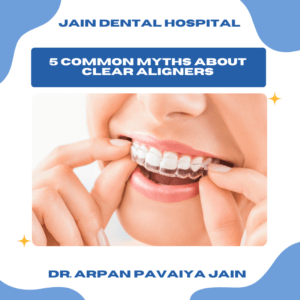Clear Aligners vs Braces: Which is Right for You?
Smile Transformation Showdown Clear Aligners vs Traditional Braces
In the quest for a perfect smile, the choice between clear aligners and traditional braces is an important decision for many. Orthodontic treatments have evolved significantly over the years, presenting a variety of options tailored to individual needs. Understanding these options can empower you to make an informed decision that aligns with your lifestyle and dental goals. This comprehensive comparison will guide you through the differences, helping you weigh your options effectively.
Understanding the Basics
What are Clear Aligners?
Clear aligners have become a popular orthodontic choice for many teens and adults seeking subtle teeth straightening solutions. Crafted from medical-grade plastic, these transparent devices gradually shift teeth into the desired position. The magic lies in their design; using advanced 3D imaging technology, each aligner is custom-made to fit snugly over your teeth.
The mechanism of clear aligners is simple yet effective. Over weeks or months, a series of aligners apply gentle pressure on teeth, moving them slightly at a time toward their optimum alignment. Each aligner is worn for about two weeks before progressing to the next in the series, continually advancing the teeth-straightening process without the need for wire-tightening appointments common with braces.
Clear aligners offer significant advantages, particularly in terms of aesthetics and convenience. However, they require adherence to a strict wearing schedule—typically 20 to 22 hours daily—for maximum effectiveness. Their removability means they’re taken out during meals, promoting better oral hygiene practices.
What are Traditional Braces?
Traditional braces are what most people envision when thinking about orthodontics. Composed of metal brackets bonded to the teeth and connected by wires, they work by exerting a constant force that gradually shifts teeth into their desired positions. Thanks to advancements in orthodontics, braces are now smaller, lighter, and more comfortable than in the past.
Traditional braces are highly effective, particularly for complex dental issues. They are irremovable, which ensures they work continuously around the clock. Unlike aligners, braces don’t depend on patient compliance for wearing time, making them very effective for individuals who might struggle with consistently wearing aligners.
Despite the effectiveness, braces involve certain challenges such as dietary restrictions and potential discomfort from the braces itself. Their visibility is also a consideration for many, especially teenagers and adults concerned about appearance during treatment.
Key Differences
Aesthetic Appeal
One of the most significant appeals of clear aligners is their near invisibility. For teenagers, young adults, and working professionals, the subtlety of aligners can mean the difference between self-consciousness and confidence. Social interactions often feel less daunting when friends and colleagues aren’t constantly reminded of your orthodontic treatment.
Traditional braces, on the other hand, are quite visible. While modern options like ceramic braces offer a less noticeable alternative to metal, they’re not as discreet as clear aligners. For many, this visibility can impact self-esteem, particularly in social settings or professional environments.
For those prioritizing a discreet treatment, clear aligners are typically favoured. However, some patients appreciate the choice of colors and customization options available with traditional metal braces, allowing them to express personal style during treatment.
Comfort Level
Comfort is another crucial factor in choosing between treatment options. Clear aligners are made from smooth plastic, reducing the risk of mouth irritation and discomfort. They’re designed to fit tightly and seamlessly over teeth, minimizing the chances of cuts or abrasions to the cheeks and gums.
Braces can initially cause some discomfort due to the metal brackets and wires. Patients often experience soreness, especially after adjustments, which can persist for a few days. However, many adapt over time and become accustomed to the feel of braces in their mouths.
Both options require an adjustment period, but aligners tend to be more comfortable overall. The smooth surfaces and lack of sharp edges make them a gentle choice for those concerned about oral comfort during treatment.
Removability
The ability to remove clear aligners offers a significant advantage. Patients can enjoy their favourite foods without restrictions, ensuring a varied diet throughout treatment. This removability also facilitates easier cleaning, reducing the risk of plaque build-up and maintaining excellent oral hygiene.
Braces, conversely, come with a list of dietary restrictions. Sticky, hard, or chewy foods can damage brackets and wires, leading to additional orthodontic visits. Cleaning around braces can also be challenging, requiring special brushes and techniques to prevent decay and gum issues.
Aligners’ removability promotes flexibility and convenience, making them an attractive option for busy lifestyles, although it also demands responsibility. Patients need to remember to wear them consistently to ensure effective treatment.
Treatment Effectiveness
Complexity of Cases
Both clear aligners and traditional braces are effective at treating various orthodontic issues. However, the complexity of the case often dictates the best approach. Aligners excel at addressing mild to moderate crowding, spacing issues, and even some bite misalignments.
Traditional braces, however, reign supreme in handling complex cases. Severe misalignments, significant bite issues, and intricate tooth movements often require the strength and precision that fixed braces provide. The consistent force applied by braces ensures comprehensive treatment for even the most challenging cases.
For straightforward dental corrections, aligners offer an excellent solution. Complex cases, however, may necessitate the reliability and proven track record of traditional braces.
Duration of Treatment
The duration of treatment varies depending on several factors, including the severity of the dental issue and the patient’s commitment to wearing aligners as prescribed. Aligners often yield quicker results for straightforward cases, typically ranging between six months to two years.
Braces generally require longer treatment times, often extending from one to three years. However, the timeline can vary based on individual cases and the specific orthodontic requirements.
Patient compliance significantly affects treatment duration. Aligners require discipline in wearing them for the recommended hours each day. Consistent adherence accelerates progress and shortens overall treatment time.
Maintenance and Care
Oral Hygiene Practices
Maintaining good oral hygiene is essential for both aligners and braces. With aligners, cleaning the trays daily is vital to prevent bacteria build up and odours. Regular brushing and flossing are necessary to maintain healthy teeth and gums, minimizing the risk of decay.
Braces require meticulous brushing and flossing to clean around brackets and wires effectively. Special tools like interdental brushes and water flossers can help reach challenging areas, reducing the risk of plaque build-up and potential dental issues.
Both methods demand a commitment to oral hygiene, with aligners offering a slight edge in ease of maintenance due to their removable nature.
Frequency of Dental Visits
Dental visits are an integral part of orthodontic treatment, regardless of the chosen method. Aligners usually require less frequent visits, with check-ins typically scheduled every six to eight weeks. These appointments ensure aligners fit properly and track progress efficiently.
Braces necessitate more regular adjustments, often every four to six weeks. These visits keep the treatment on track, make necessary adjustments, and address any discomfort or issues.
While the frequency of visits varies, both aligners and braces require regular monitoring to achieve the best results.
Cost Considerations
Initial Costs
The cost of orthodontic treatment is a significant consideration for many patients. Clear aligners tend to have a higher initial cost compared to traditional braces. The custom design and advanced technology involved contribute to the expense, though aligners may become more affordable as they grow in popularity.
Braces typically have more consistent pricing, with metal options being more budget-friendly compared to ceramic or lingual braces. Insurance coverage can also influence affordability, with some plans offering benefits for certain types of treatment.
Factors such as treatment duration, complexity, and additional services can affect the total cost for both methods. Patients should discuss options with their orthodontist to determine the best fit for their budget.
Long-term Value
Long-term value encompasses more than just initial costs. Patients should consider the potential for additional expenses, such as replacements or repairs. Aligners often involve a replacement cost if a tray is lost or damaged, while braces may require repairs for broken brackets or wires.
Patients should weigh these potential costs against the benefits of each method. Aligners may offer greater convenience and fewer lifestyle disruptions, while braces excel in handling complex cases and ensuring comprehensive treatment.
The investment in orthodontic treatment ultimately contributes to improved oral health and self-confidence, making it a worthwhile endeavour for many patients.
Patient Commitment and Lifestyle Impact
Compliance Requirements
Patient compliance plays a crucial role in the success of orthodontic treatment. Aligners require dedication to wearing them for 20-22 hours daily. Removing them for too long can hinder progress and extend treatment time.
Braces demand regular adjustments to ensure steady progress. Patients should follow their orthodontist’s guidance and attend all scheduled appointments to achieve optimal results.
Both methods require commitment, with aligners offering flexibility and convenience, while braces ensure continuous treatment without the risk of forgetting to wear them.
Lifestyle Adjustments
Lifestyle adjustments are part of the orthodontic journey, regardless of the chosen method. Aligners provide flexibility, allowing for normal eating habits and easy removal for cleaning. Patients can enjoy their favourite foods without fear of damaging aligners.
Braces introduce dietary restrictions to protect brackets and wires. Sticky, hard, or chewy foods should be avoided to prevent damage. While these restrictions may be challenging, they play a crucial role in maintaining the integrity of the braces.
Both methods require adaptions, with aligners offering more freedom in daily routines and braces providing reliable, round-the-clock treatment.
Conclusion
Choosing between clear aligners and traditional braces is a significant decision with a lasting impact on oral health and confidence. This comparison highlights the pros and cons of each method to help you make an informed choice based on individual needs and preferences.
Ultimately, consulting with an orthodontist is essential for personalized advice tailored to your unique dental goals. By considering your lifestyle, the complexity of your case, and your commitment to treatment, you can make the best decision for your smile transformation.
Both clear aligners and traditional braces offer pathways to a beautiful, confident smile that can last a lifetime. Explore your options, understand the differences, and start your journey toward the perfect smile today.
Find the Perfect Path to a Straighter Smile!
Considering clear aligners or traditional braces? Jain Dental Hospital can help you decide which orthodontic treatment is right for you.
Schedule a consultation today to discuss your individual needs, lifestyle, and smile goals. We’ll help you explore the pros and cons of each option and create a personalized treatment plan.
Call us at +91-9582535204 or visit our website at www.jaindentistdelhi.com to book your appointment online. We look forward to seeing you smile!

Dr. Arpan Pavaiya Jain, Director of Jain Dental Hospital, Indirapuram, Ghaziabad is a renowned Prosthodontist and Implantologist with over 20 years of expertise in advanced dentistry. A graduate of the prestigious King George’s Medical College Lucknow, he has performed more than 20,000 successful dental implant procedures. Dr. Jain leads a team of skilled professionals, offering state-of-the-art treatments in dental implants, clear aligners, cosmetic dentistry, orthodontics, and more. Known for his personalized care and commitment to excellence, he has earned a reputation as a trusted dental expert in Indirapuram, Ghaziabad.





